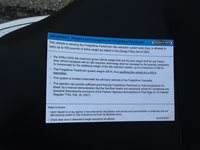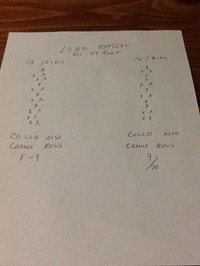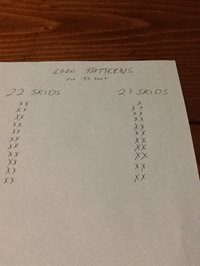Loading Heavy
A couple of weeks ago I hauled a 46,815 pound load legally. That is not the heaviest load that I have logged legally with my Cascadia Evolution. There was one load over 47,000 pounds. Whenever I know that I have a heavy load coming up my planning changes. I don't go into these stops full of fuel. It is tempting to just fuel up when you get past a weigh station. That may not be a good idea. I still keep it legal by adding only the fuel necessary. Many of my heaviest shippers have scales on site. That makes like a lot easier.
 Know your empty weight and how much you are capable of hauling. Make sure that the shipper is giving you an honest weight. Ask if the pallet weight is included. Pallets can easily add 1,000 pounds or more to a load. If you have an APU, make sure that you carry the proper documentation to get your weight allowance. If you have an air axle gauge, know where 34,000 pound is. If you can trust your shipper, knowing what you have on your drives will provide a good estimate of what you have on your trailer axle. Remember “trust but verify” at $10 a shot scaling a couple of loads a week will add up to over $1,000 per year. It still beats a fine and subsequent inspection.
Know your empty weight and how much you are capable of hauling. Make sure that the shipper is giving you an honest weight. Ask if the pallet weight is included. Pallets can easily add 1,000 pounds or more to a load. If you have an APU, make sure that you carry the proper documentation to get your weight allowance. If you have an air axle gauge, know where 34,000 pound is. If you can trust your shipper, knowing what you have on your drives will provide a good estimate of what you have on your trailer axle. Remember “trust but verify” at $10 a shot scaling a couple of loads a week will add up to over $1,000 per year. It still beats a fine and subsequent inspection.
Live loading can be an advantage, when loading heavy. These loads generally take less time than cubed out  loads. Consult with the loader. I like to load my heavier loads like a 45 footer. That means 11 rows of pallets. A standard pallet is 48” x 40”. It is common to gain a foot or so over the length of the truck 22 pallet spots will generally stretch from 44-45 feet.. If all 22 pallets weigh the same and you are under gross run them straight in. Many of these loads will have less than 22 pallets. These loads will require “singling” of pallets. For instance an 18 pallet load will require 4 singles to stretch the load out. Try to get half of the weight in the first half of the trailer. Singles should be loaded down the middle. Then they will block the pallets behind them from moving forward in a hard stop. If you have a closed gap or a reefer trailer start with a single. If possible do not put two singles in a row. If you do consider blocking them in. Shrink wrap them if you can, no one benefits from damage.
loads. Consult with the loader. I like to load my heavier loads like a 45 footer. That means 11 rows of pallets. A standard pallet is 48” x 40”. It is common to gain a foot or so over the length of the truck 22 pallet spots will generally stretch from 44-45 feet.. If all 22 pallets weigh the same and you are under gross run them straight in. Many of these loads will have less than 22 pallets. These loads will require “singling” of pallets. For instance an 18 pallet load will require 4 singles to stretch the load out. Try to get half of the weight in the first half of the trailer. Singles should be loaded down the middle. Then they will block the pallets behind them from moving forward in a hard stop. If you have a closed gap or a reefer trailer start with a single. If possible do not put two singles in a row. If you do consider blocking them in. Shrink wrap them if you can, no one benefits from damage.
 Remember that when freight falls, it generally falls to the right. The rear most pallets and the singles are the most likely to fall. Do not put a single on the rear. Consider turning the last row. Straight in the combined pallet width is 80 inches. Turning them will stretch that to 96” and limit movement. If for some reason you can't turn them don't leave room for the freight to fall right. Then use load bars or straps to secure the load. Taking it easy will conserve fuel. Even with the heaviest loads I have been able to average over 8 mpg. Loading it properly will keep you safe, legal, and hopefully profitable.
Remember that when freight falls, it generally falls to the right. The rear most pallets and the singles are the most likely to fall. Do not put a single on the rear. Consider turning the last row. Straight in the combined pallet width is 80 inches. Turning them will stretch that to 96” and limit movement. If for some reason you can't turn them don't leave room for the freight to fall right. Then use load bars or straps to secure the load. Taking it easy will conserve fuel. Even with the heaviest loads I have been able to average over 8 mpg. Loading it properly will keep you safe, legal, and hopefully profitable.